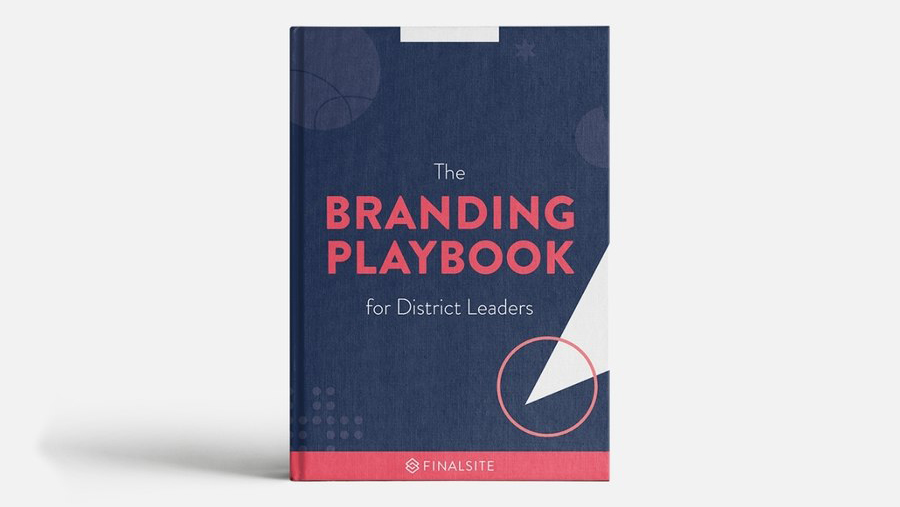It’s a new year (and a new decade!), which means we’re all making big plans and setting lofty organizational goals to kick off 2020. For many schools and districts, this means tackling that organizational rebrand you’ve been thinking about for years. That 1980s logo just isn’t cutting it anymore.
The purpose of this blog isn’t to deter you from rebranding. Rather, our hope is to shed light on a few components K-12 schools and districts forget about during a rebrand process and to keep you from making the same mistakes.
1. Rebranding just for the sake of rebranding.
Before you even consider bringing the idea of a rebrand to the table at your next leadership meeting, you should have at least one core reason identified as to why you think your organization should make such a monumental change. What problem are you trying to solve? If your only response is “I think it’s time for a change” your rebrand exercise is likely going to be a challenging one. Some of the most typical reasons to rebrand include:
• Major changes to your target customer. Perhaps your admissions footprint has changed over time and the type of families you’re recruiting have different needs.
• You have an outdated look. This is the most typical reason we come across as a company. Most schools and districts haven’t touched their visual identity or assessed their messaging platform in years, and their brand doesn’t reflect their current values.
• Large structural changes to your school or district. In 2013, Berea High School and Midpark High School in Ohio merged as part of the Berea City School District’s consolidation process. Because of this merger, the new high school — Berea-Midpark High School — needed a new visual identity and mascot. The school ultimately landed on Titans as the new mascot and combined the previous official colors of Berea High School (blue and red) and Midpark High School (orange and brown) to establish the new school’s color palette (blue and orange).
2. Operating in a silo.
Even after you’ve identified your reason for rebranding, you still run the risk of alienating and angering your community if you operate in a silo during the process. Inclusivity is essential in a rebrand exercise. From the very start of the process, you should include your key stakeholders and engage in focus groups and surveys at every stage. Giving your students, teachers, administrators, school board members, and other key stakeholders a seat at the table will not only help you clarify your current brand equity, it will help you develop advocates and fans when you’re ready to launch later in the process.
Make your rebrand exercise collaborative, interactive and enjoyable for your community by inviting feedback and allowing your most important stakeholders to have a voice.
3. Neglecting equity.
In all likelihood, people in your community are attracted to something in your current brand. Whether it’s a logo, mascot, color or some piece of messaging you’ve used for years in a slogan, you should determine what equity exists in your current brand before finalizing any changes. Through surveys and focus groups, you’ll likely know at the end of your research phase if your rebrand exercise is going to be evolutionary (small refinements to the existing brand) or revolutionary (complete brand overhaul).
This is where many organizations go wrong and abandon members of the community. Learn what your community loves about you and build on it.
4. Avoiding substance.
Rebranding just for the sake of seeing something new likely won’t end well. While it’s always fun and exciting to see a fresh look and new logo, your visual identity is only a small part of your brand. You should use this opportunity to not only assess your organization’s visual identity system but take the time to clarify your mission, vision, values and unique selling proposition. What philosophies and behaviors drive your organization? What sets you apart? Why should the community care about you? Your mission and values are likely well established throughout your organization in everything you say and do, but taking a magnifying glass to those components alongside your visual identity will be beneficial in the long run.
5. Failure to launch.
You’ve spent months pouring over survey results, held countless focus groups, and prepared dozens of design drafts. You now have a new visual identity system you want to show to the world, but you haven’t thought through how to launch it in a way that’s going to create a buzz and resonate with your community. Creating both an internal and external launch plan late in the process is vital. Internally, your staff needs to understand the new brand and how to use your new visual identity and/or messaging platform. Failure to engage internally with your staff before taking your new brand public could prove costly.
Externally, consider your audiences and the most meaningful way to introduce them to your new brand. Perhaps you have it in your budget to buy decals, t-shirts, coffee mugs or other branded merchandise with your new marks for a large community gathering where you’ll introduce the new brand. If you have media members you work with on a regular basis, make sure they have easy access to the new logos and a style guide to follow.
Phasing out your old marks and outdated messaging copy takes a lot of work, but it’s all too often an afterthought for organizations.
At Rhodes Branding, we’ve worked with a number of districts and schools on rebrand efforts. If a rebrand exercise is something you’re considering, we’d love to help. Send a us note.




